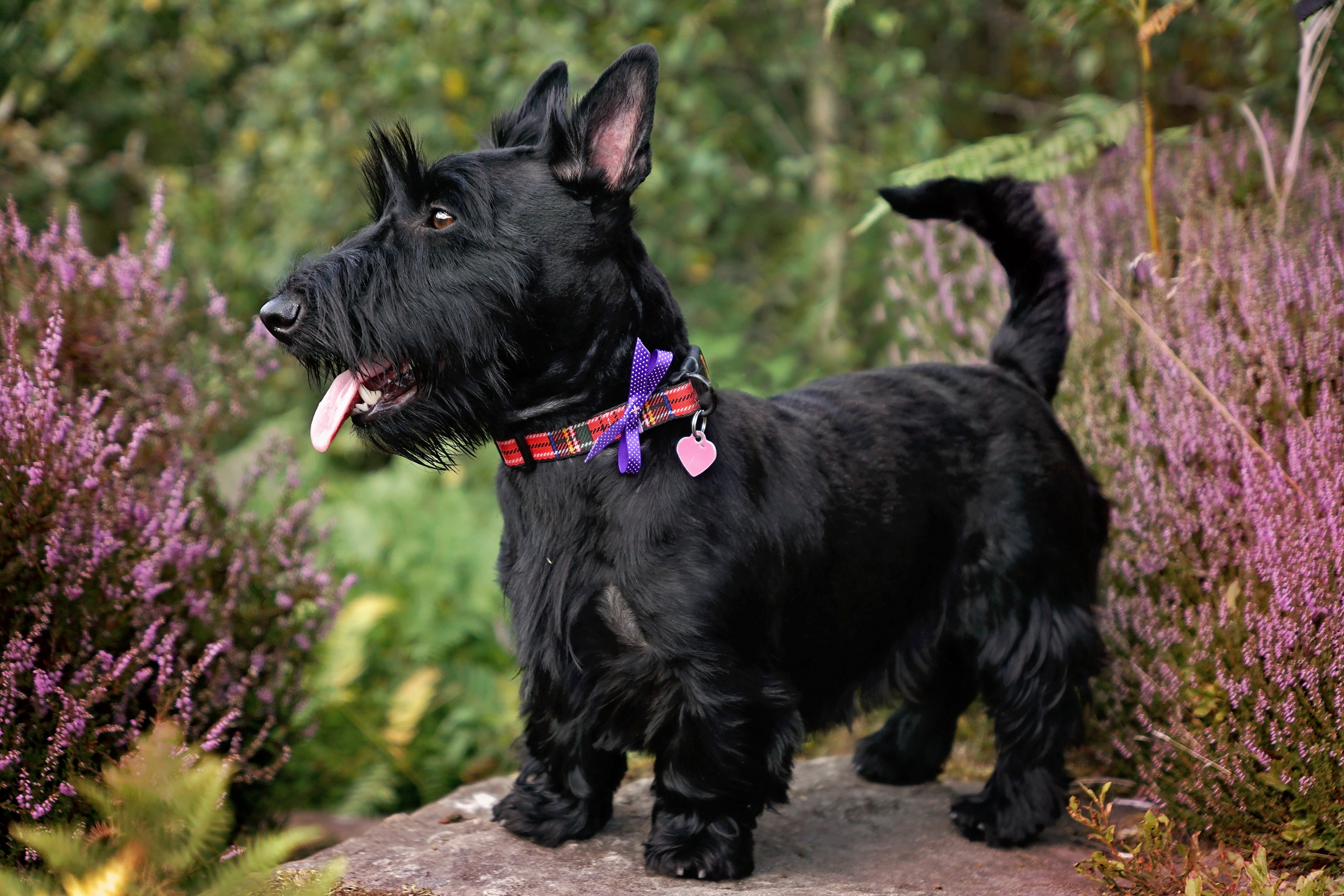Scottish Terrier
Iconic thanks to the board game Monopoly, the Scottish Terrier, or Scottie Dog, is a short-legged, square-shaped dog. They are compact and heavy-boned, making them powerful little packages. Their coats have a dense undercoat and a hard and wiry overcoat. Expressive eyebrows and a wizened beard give them a pensive expression.
Breed characteristics carousel
Learn More
Need to Know
- Dog suitable for owners with some experience
- Extra training required
- Generally healthy breed
- Enjoys active walks
- Small dog
- Some drool
- Requires frequent grooming
- Chatty and vocal dog
- Barks and alerts to visitors/anything unusual
- Could have issues with unknown dogs but gets along with known dogs
- May need additional training to live with other pets
- May need additional supervision to live with children
- Needs a small yard or can happily live in the city
- Can be left alone occasionally with training
- AKC Registered Breed

Personality
Rugged and tough, the Scottish Terrier dog is a smart and determined dog. They are always ready for action and can often be fearless and feisty. Socialization is crucial to ensure they become well-mannered dogs. Reserved but amiable with strangers once they get to know them, they are utterly devoted family members. They tend to dig and bark, which can be overcome with proper training.
There’s confusion around the Scottish Terrier’s background, but there’s no denying that these dogs are 100% hardy Scottish dogs. The first documentation of the Scottie Dog was in the late 1800s in Aberdeen, Scotland, but they had likely been grouped with Isle of Skye Terriers at one point. (They were often called Aberdeen Terriers.) The Scottie came to America in 1883 and gained popularity, especially after World War II. President Franklin D. Roosevelt had a Scottie Dog named Fala who was buried with him.
Owners who understand a Terrier dog’s tenacious personality and who enjoy the challenge of getting them to become well-behaved dogs will enjoy owning a Scottie Dog. They are small and powerful pups who need active owners, ready to keep pace with their energy. They are spicy and act like they are bigger than they are, so owners need to train them with that mentality.
The Scottish Terrier needs mental and physical stimulation daily, preferably in the form of walks, free-running, games, problem-solving, and puzzles. They particularly enjoy scent-based work.
A fenced-in place to run and access to a variety of walking trails will please the Scottish Terrier dog breed. They can do well in apartments or with city life so long as these needs are met.
The hypoallergenic, hard, and weatherproof coat of the Scottie Terrier dog needs hand-stripping a couple of times a year, while the rest of their bodies can be clipped as needed. Their distinctive beards need grooming regularly.
Independent thinkers, the Scottish Terrier can have an obstinate streak, so they need training with positive reinforcement and good motivation. A bored Scottie will find their own things to do, none of them necessarily good. They enjoy tug toys in particular. Socialization is important.
Scottish Terriers are good family dogs if raised with children. They do best with older children or families with no children.
The cost of a Scottish Terrier from a breeder is significantly more than the cost of adopting one from a local shelter or rescue. The adoption fee usually covers additional items such as spaying or neutering, vaccines, and microchipping.

Learn more about feeding and caring for your Scottish Terrier on Purina.
Did You Know?
- Scottish Terriers have enjoyed popularity with the rich and famous, including Queen Victoria, President Franklin D. Roosevelt, Eleanor Roosevelt, and more.
- Scottish Terriers may experience a neurological disorder called the “Scottie cramp” when excited—their muscles seize up.
- The Scottie Dog is the most popular piece in the game Monopoly.

